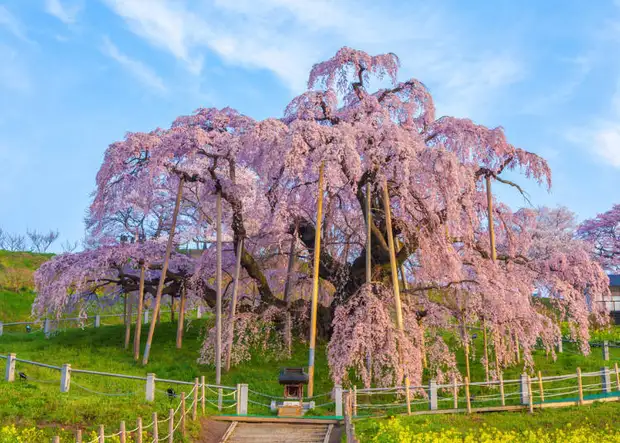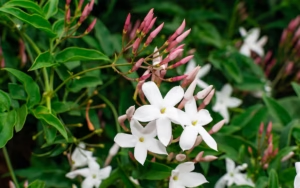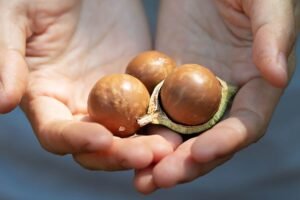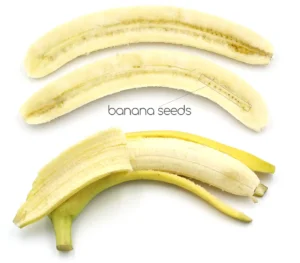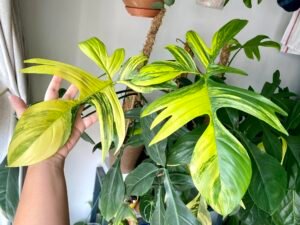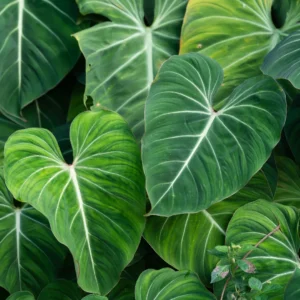Weeping cherry trees are enchanting ornamental trees known for their gracefully cascading branches and spectacular springtime blooms. While their beauty is undeniable, caring for them requires a bit of dedication and attention to detail. This comprehensive guide will help you grow and maintain a healthy weeping cherry tree, ensuring it thrives in your garden for years to come.
Weeping Cherry Tree Care
Caring for a weeping cherry tree starts with understanding its needs, from the right planting location to ongoing maintenance. With a little effort, your tree can become a show-stopping centerpiece in your landscape.
Light Requirements
Weeping cherry trees flourish in full sunlight. Ideally, they should receive at least six hours of direct sunlight daily. While partial shade may suffice in hotter climates, full sun is essential for vibrant blooms and healthy growth.
- Tip: If your tree is struggling to bloom, consider relocating it to a sunnier spot or trimming nearby plants that may block light.
Soil Preferences
The ideal soil for weeping cherry trees is well-draining, rich in organic matter, and slightly acidic to neutral (pH 6.0 to 7.0). Poorly draining soils can lead to root rot, a common issue for these trees.
- How to Improve Soil: Incorporate compost or aged manure into the planting area to enhance drainage and nutrient content.
Watering
Young weeping cherry trees require consistent watering to establish their roots. Once mature, they are relatively drought-tolerant but still benefit from deep watering during dry periods.
- Watering Routine:
- Spring/Summer: Water weekly, providing about 1-2 inches of water.
- Fall/Winter: Reduce watering but ensure the soil doesn’t dry out completely.
Fertilization
Feeding your tree with the right fertilizer can significantly impact its health and blooming potential. Use a balanced, slow-release fertilizer in early spring and again in late summer.
- Pro Tip: Avoid over-fertilizing, as this can lead to excessive leaf growth and fewer blossoms.
Mulching
Applying a 2-3 inch layer of organic mulch around the base of your tree helps retain soil moisture, regulate temperature, and suppress weeds.
- Important: Keep the mulch 2-3 inches away from the trunk to prevent rot and pest infestations.
Pruning
Pruning is a critical aspect of maintaining a weeping cherry tree’s iconic shape and health. Without proper pruning, the tree can become overgrown and vulnerable to diseases.
When to Prune
Late winter or early spring, before new growth begins, is the ideal time to prune. This timing minimizes stress on the tree and encourages healthy development.
- Avoid Pruning During: Active growth periods, as this can lead to sap loss and weakened branches.
How to Prune
- Remove Dead or Diseased Branches: Regularly inspect your tree and remove any damaged or diseased parts to prevent the spread of pathogens.
- Maintain the Shape: Trim back overly long branches to preserve the tree’s cascading appearance.
- Thin Dense Areas: Promote airflow and sunlight penetration by removing excess growth within the canopy.
- Tools Required:
- Pruning shears for small branches
- Loppers for medium-sized branches
- Pruning saw for thick, mature branches
Safety Tip
Always sterilize your tools before and after pruning to reduce the risk of disease transmission.
Propagating Weeping Cherry Trees
If you love your weeping cherry tree, why not propagate it? While propagation requires patience and precision, the result can be incredibly rewarding.
Grafting
This professional technique is the most reliable method for propagating weeping cherry trees.
- Choose Rootstock: Select a healthy and disease-resistant rootstock.
- Prepare the Scion: Cut a young shoot from the parent tree.
- Graft the Scion: Attach the scion to the rootstock using grafting tape, ensuring a snug fit.
- Care for the Graft: Place the grafted plant in a controlled environment until it shows signs of growth.
Softwood Cuttings
For home gardeners, propagating through cuttings is a simpler alternative.
- Take a 6-8 inch cutting from healthy branches in early summer.
- Dip the cut end in rooting hormone to promote root development.
- Plant the cutting in a pot filled with a mix of potting soil and sand.
- Cover with a plastic bag to retain humidity, and place the pot in indirect sunlight.
- Water regularly, keeping the soil moist but not waterlogged.
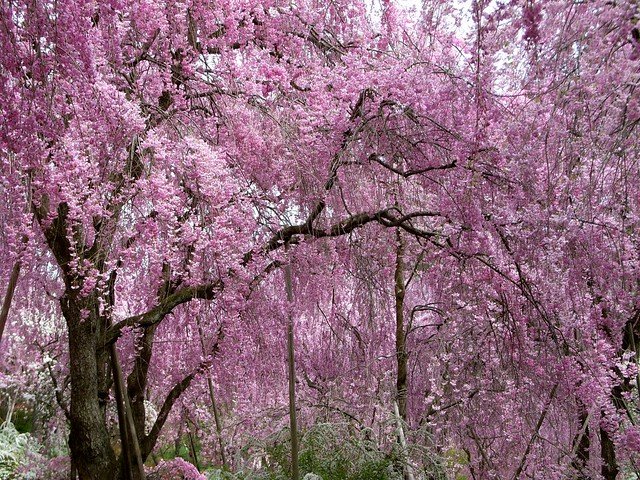
How to Grow Weeping Cherry Tree From Seed
Growing a weeping cherry tree from seed is a labor of love that takes time and dedication but can be incredibly fulfilling.
Seed Collection
Harvest seeds from ripe cherry fruit during late summer. Clean off any remaining pulp to prevent mold or pests.
Stratification
Cherry seeds require a cold treatment to mimic winter conditions. This process is crucial for successful germination.
- Place seeds in a damp paper towel, then seal them in a plastic bag.
- Store the bag in the refrigerator for 10-12 weeks.
Planting the Seeds
- After stratification, plant the seeds in pots filled with nutrient-rich, well-draining soil.
- Cover the seeds lightly with soil and water gently.
- Place the pots in a sunny location and maintain consistent moisture.
Transplanting
Once the seedlings reach 6-8 inches in height, they are ready for transplanting to a permanent outdoor location.
- Pro Tip: Acclimate the seedlings by gradually exposing them to outdoor conditions over a week.
Common Pests & Plant Diseases
Weeping cherry trees are susceptible to several pests and diseases. Identifying and addressing these issues early is key to keeping your tree healthy.
Pests
- Aphids: These small insects suck sap from leaves, causing them to curl and yellow. Treat with insecticidal soap or neem oil.
- Japanese Beetles: These pests feed on leaves and flowers. Use traps or apply neem oil to affected areas.
- Spider Mites: These tiny pests create webbing on leaves. Increase humidity around the tree and use insecticidal soap if needed.
Diseases
- Powdery Mildew: Characterized by white, powdery spots on leaves. Improve air circulation and apply fungicides.
- Canker Disease: Causes sunken, discolored areas on branches. Prune affected parts and apply fungicidal sprays.
- Cherry Leaf Spot: Leads to yellowing and dropping leaves. Remove infected leaves and apply a fungicide.
How to Get Weeping Cherry Tree to Bloom
A tree that doesn’t bloom can be disappointing, but a few adjustments can often solve the problem.
Sunlight
Ensure your tree gets full sun, as insufficient light can hinder blooming.
Watering and Drainage
Avoid waterlogged soil, which can damage roots and impact flower production.
Fertilization
Use a fertilizer high in phosphorus to encourage blooms. Avoid fertilizers rich in nitrogen, as they promote leafy growth over flowers.
Common Problems With Weeping Cherry Tree
Weeping cherry trees are not without challenges. Here are some common issues and how to address them:
Root Rot
Overwatering or poorly draining soil can cause roots to rot. Improve drainage or consider raised beds.
Bark Splitting
Temperature fluctuations can cause the bark to crack. Protect young trees with wraps during winter.
Wilting Leaves
Underwatering or root issues often cause wilting. Ensure consistent watering and inspect the roots for damage.
FAQ
Does weeping cherry tree have nice fall foliage?
Yes, the foliage turns vibrant shades of yellow and orange, adding a splash of autumn color to your garden.
What is the biggest con to planting a weeping cherry tree?
Their susceptibility to pests and diseases is the biggest drawback, requiring ongoing care and attention.
What is a weeping cherry tree used for?
Primarily, these trees serve as ornamental features, enhancing the beauty of gardens and landscapes.
Why is it called weeping cherry blossom?
The term “weeping” describes the tree’s drooping branches, which resemble a cascading waterfall.
Read also: https://techcrunchs.net/how-to-grow-amaryllis-a-complete-guide/
Read also: https://techcrunchs.net/the-agave-plant-a-comprehensive-guide-to-growing/

